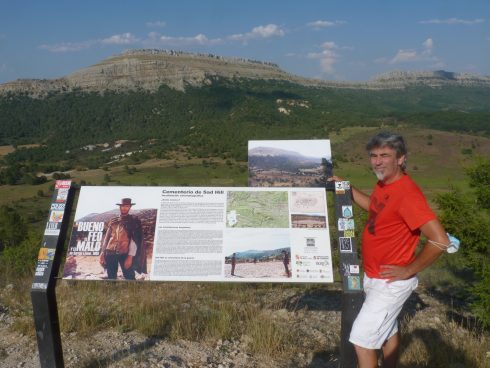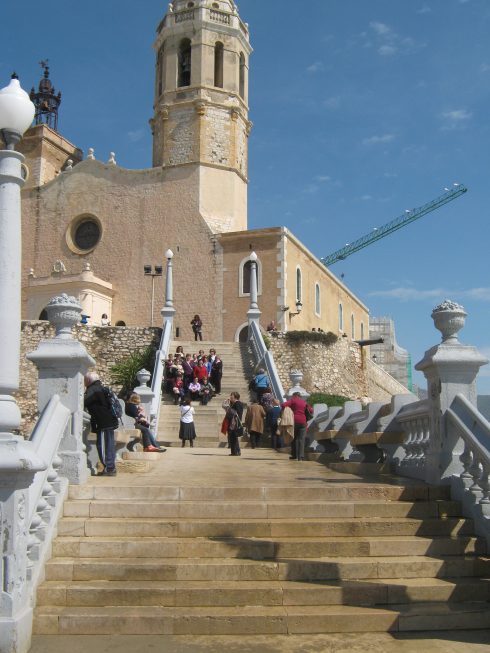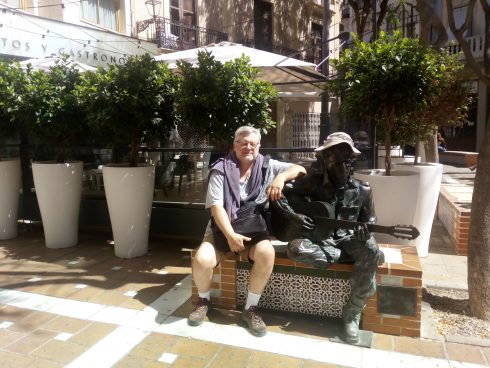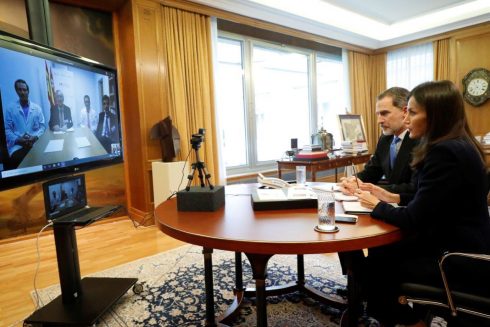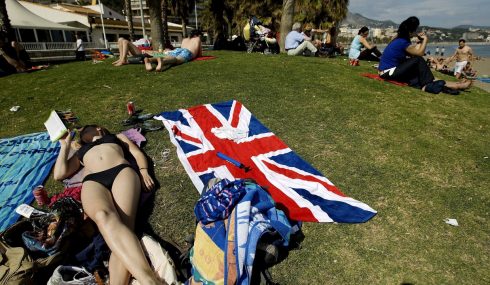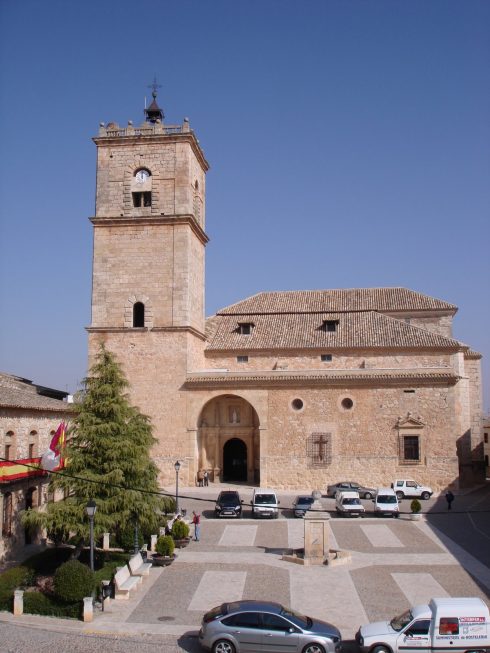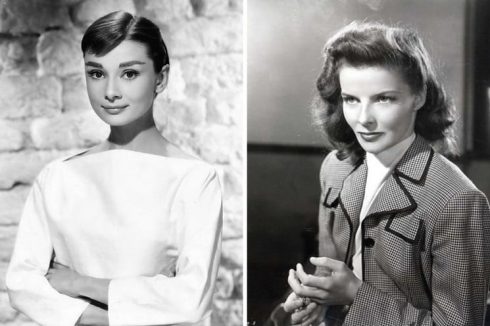
Two mythical maidens have made movies in Spain, and they both went by the name of Hepburn, although they were unrelated.
Katherine Hepburn, who out-acted Humphrey Bogart in the African Queen, played King Priam’s queen, Hecuba in The Trojan Women, released in 1971, and five years later Audrey Hepburn, who entranced us all in My Fair Lady and Breakfast at Tiffany’s, was none other than Maid Marian in Richard Lester’s Robin and Marian, where she played alongside Sean Connery as an ageing Robin Hood.
Part One: the Katherine
An all-star cast of actresses such as Vanessa Redgrave, Katherine Hepburn and Irene Papas descended upon the ruins of Atienza in Guadalajara province, 80 miles north east of Madrid, to recreate Greek tragedy.
Local people were shocked by the fact that the film company were willing to pay as much as 100,000 pesetas a month to rent the house for Katherine Hepburn in front of San Salvador church, known as El Chalet.
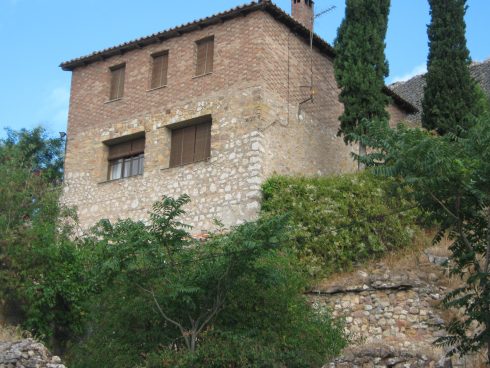
Curiously, she was the only member of the crew to stay in the village, getting around on a bicycle; the rest were lodged in the nearby medieval town of Sigüenza. The house in question used to be the old summer casino (not a den of gambling but a kind of social centre).
When Katherine Hepburn stayed there, it had recently been reformed by its new owners. She furnished the house herself and lived there with a young, uniformed butler, enjoying the two floors and garden.
On our visit to Atienza my wife and I were fortunate to be invited into the house by Julián the owner. As his children played around in the garden, he pointed out that the lower half of the house was as it was when Hepburn lived there, although the top half had since been reformed.
We also met José Maria, who like most of the inhabitants of his age was an extra in the film. His job was to stand upon the walls of Troy holding a spear.
Unlike the distant Irene Papas, Katherine Hepburn apparently got on very well with the local people, who found her kind and friendly, especially with the children.
The film company hired two local people, both of whom had since died, to protect her delicate, pale skin from the scorching sun with umbrellas and parasols.
Most of the filming in the village of Atienza took place near Hepburn’s house, around the old town walls, and at the spring, or drinking fountain known as ‘Fuente de San Gil.’ The fountain can be seen in early scenes when the Trojan women are herded out of the city, which is mostly seen from the outside as a series of ruined walls, although about five minutes into the film there is a splendid full view of the village at sunset.
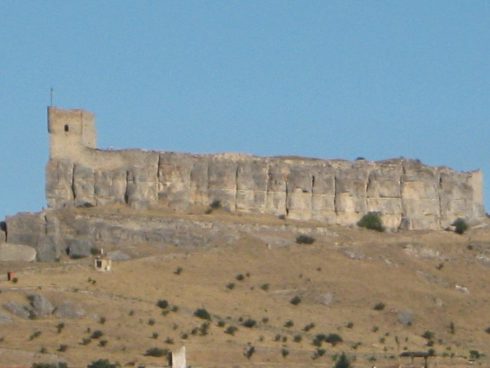
Brian Blessed is the ‘good’ Greek, who is constantly bringing news from and sending captives to the ships at the beach, which we are supposed to believe is just down the hill. In reality, it is harder to be further from the coast than at Atienza.
An interesting film if you enjoy much wailing and rending of garments, with Atienza as the true star.
Although the tourist information office doesn’t take much advantage of the film having been made there, in a local hotel called Hotel Antiguo Palacio de Atienza, they had on display in reception a book called ‘Atienza Ayer’ (Yesterday), the last chapter of which is dedicated to The Trojan Women, with photographs of the shooting.
Like many Spanish towns invaded by American film makers, Atienza benefited from its colonisers. Apart from the welcome money paid to extras, the producers brought electricity and phones to Atienza’s old hospital and helped set up a school in the old Falange building.
The castle of Atienza still dominates the Castilian plain where it stands, offering an unspoilt touch of medieval mystery that at least one film maker, Mihalis Kakogiannis, appreciated enough to do all the exteriors there, and where people still talk about “the film” without needing to mention the title.
Part Two: the Audrey
Sherwood Forest’s theme park would today probably detract from the area’s authenticity, and even in the mid-seventies Richard Lester chose the unspoilt Orgi wood, an 80-hectare oak grove more than 4,000 years old, now a Recreational Nature Zone, to portray Sherwood Forest.
In the park we saw a tree that looked suspiciously like the one that Denholm Elliot and Ronnie Barker fall out of onto the Sheriff’s men, but that might just be wishful thinking.
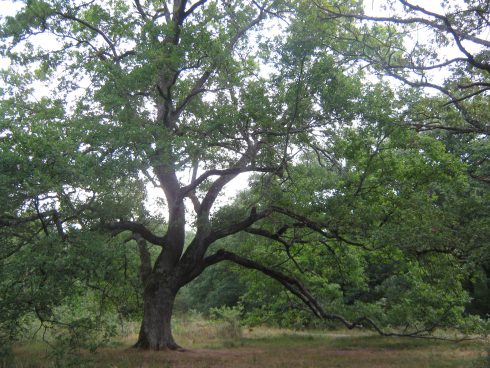
Lester commented that the area looked like everyone’s idea of what England looked like in the twelfth and thirteenth centuries. The glades among the oaks where Robin acts out his second childhood do indeed seem to be as idyllic and halcyon as any English country beer garden.
In Lisazo we met Manolo el Herrero (the Blacksmith), whose father and grandfather had indeed exercised that profession. Manolo was one of many local people who turned up looking for work and glory, and who was chosen to be Sean Connery’s stand-in for when the scenes were being prepared.
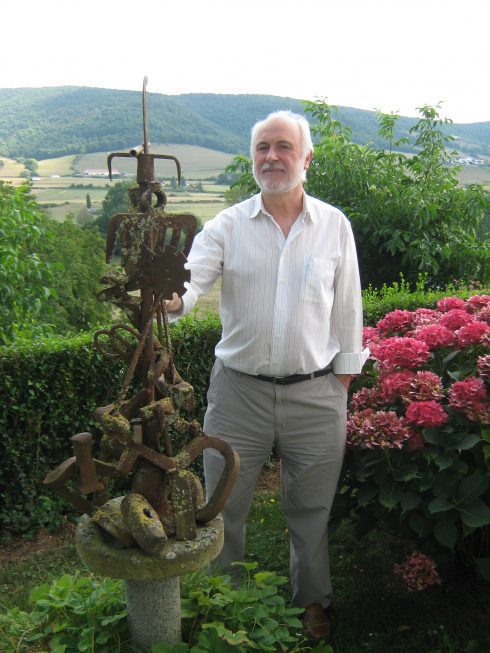
Although most of his time was spent with Audrey Hepburn’s stand-in, he did once get to sit down with the lady herself, and witnessed the strange fact that when she washed her hands, it was with bottled mineral water.
Some of the crew stayed at Lisazo’s Posada (Inn), which is now closed.
Sherwood was in fact played by two different forests in Navarra, the mountainous Quinto Real on the way north to Roncesvalles, was also employed.
The Sheriff of Nottingham’s castle is in fact the Navarra village of Artajona, with a little bit of extra work by the production team to give it a suitably ‘lived in’ feel.
In one scene Robin and Little John ride to the castle on a stolen cart through a vineyard, which is still there today, in order to rescue some kidnapped nuns.
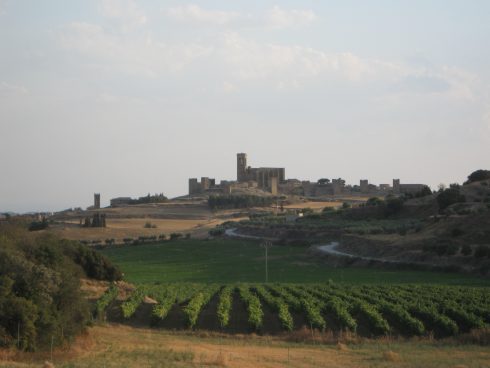
We were shown around Artajona by Town Hall employees Soco and Daniel, who generously showed us the imposing skyline from inside, outside and in all kinds of light and floodlight.
We were also introduced to some of the local people who participated in the making of the film, such as octogenarian Jerusalén Jurio, who explained to us how she had been one of ‘Nottingham’s’ market vendors, peeling the skin from a rabbit as though taking off a glove.
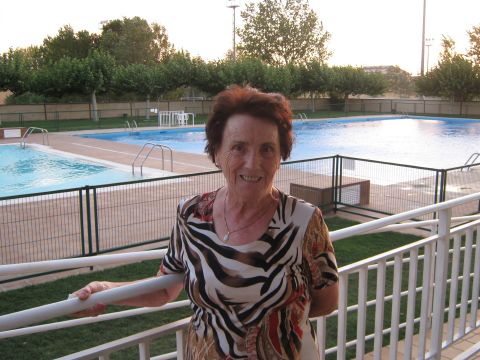
The castle besieged incompetently by Robin (Sean Connery) at the film’s beginning and then pillaged irrationally by a psychotic King Richard (Richard Harris) was in reality Villalonso Castle in Zamora province.
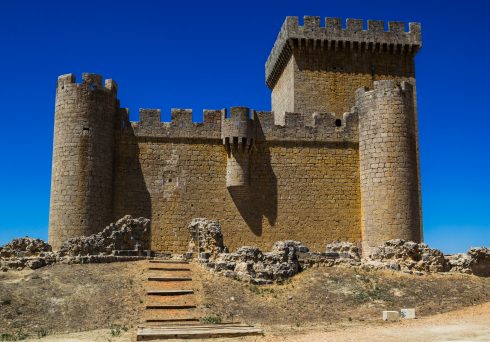
Richard pays the price for his blood thirst when an old man ‘throws’ an arrow into his neck, causing his death the following day during a banquet held quite far away in the Palacio de Capitania, which is now the General Archive building of Navarra in Pamplona.
On our visit to the Archive we were shown around by Peio Monteano, who was well aware of the building’s movie use, having himself shown his in-laws from Wisconsin around the various local locations of the film.
I don’t know whether or not director Richard Lester knew that the Palace had originally belonged to Sancho el Sabio (the Wise), Richard Lionheart’s real life father-in-law, and that the display room representing the palace where Richard dies bears Sancho’s name, but it seemed too good a coincidence to be coincidence.
The famous, sensuous Spanish actress Victoria Abril plays Queen Isabella, King John’s child queen who occasionally isn’t thinking about sex, while Audrey Hepburn’s Marian, gave up the life of the flesh when Robin left her for a Crusade, and now she is willing to give up everything for him, even his life.
Hepburn proved her impractical nature by driving a horse and cart laden with nuns into a river during filming, a genuine accident that remained in the film. The river in question is the one that now surrounds the camp site at Urrobi, just south of Roncesvalles, where we were told by two local people that shooting took place.
Marian’s ‘Abbey’ was constructed especially for the film at the Urbasa mountain range, to the north west of Pamplona, where the final battle scene also took place.
Local expert Balbino García de Albizu informed us of the exact location of Hepburn’s convent, which was built at the Alto de Aranzaduia.
Connery and Hepburn developed a close friendship during filming, and even attended the bull running at Pamplona’s San Fermin festival in July 1975.
If you would like to receive a free 686 page text of my book Movies Made in Spain, just drop me a line at [email protected]


